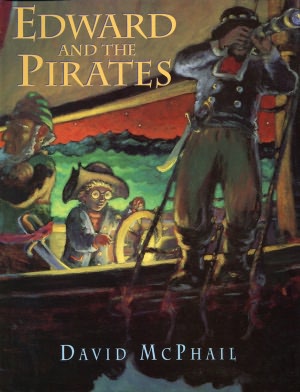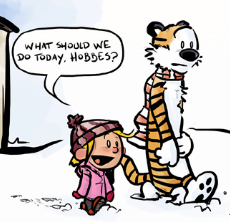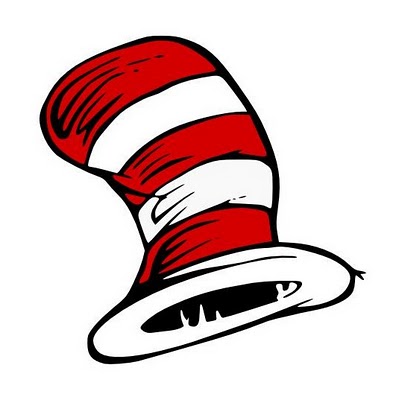
September 19th is “Talk Like a Pirate Day” (a tradition started by humor columnist Dave Barry). So to honor this momentous occasion, I’d like to share a review of one of my favorite children’s picture books about pirates.
“Edward and the Pirates” is such a great title for a children’s picture book. (This book was a “Publisher’s Weekly” bestseller!) And David McPhail more than lives up to it. McPhail had already written more than 40 children’s books, including three about a troubled little boy named Edward. The boy first appeared in “Santa’s Book of Names,” but in this first sequel he’s meeting a more exciting character – pirates! (And his next adventure would be “Edward in the Jungle”…)
McPhail writes and illustrates the books – but fortunately, he’s good at both! There’s a great illustration on the title page of a moonlit ocean and a shadowy chest of doubloons (with a skull and crossbones on its side). But all the illustrations are gorgeous. There’s a ship on an aqua sea, and a drawing of rolling waves swamping the boat as Edward struggles at it’s wheel. They add a lot to the book, and some of the drawings even look like oil paintings – even if it’s just Edward at his breakfast table!
“Once Edward learned to read, there was no stopping him,” McPhail writes. It’s a nice segue from the first book (in which Edward couldn’t read until after a magical meeting with Santa). Now he’s reading cereal boxes at the breakfast table, and “seed catalogs that arrived on the coldest day of winter.” But especially…books! And it seems appropriate that as Edward discovers the joy of reading, he’s drawn with some suitable wonderful illustrations. The library has now become Edward’s favorite place, and McPhail adds that Edward “especially liked stories of adventures…”
Edward imagines himself rescuing Robin Hood, or traveling by dog sled to the North Pole. Once he even imagines he sees real dinosaurs outside his window. And as he’s reading a book about pirates, pirates gradually start to appear. McPhail makes a seamless transition, showing the ocean itself rolling up to Edward’s bed (where he’s deeply engrossed in the book). Pirates want to borrow it – since it tells where their treasure was buried. But Edward refuses, since he’s already checked out the book on his library card.
In his bedroom, the pirates threaten him, until his mom arrives on a white horse and later his father with a bow and arrow. “I don’t think they meant any harm,” says Edward politely. “They only came for this book.” There’s a beautiful drawing of the lagoon under a silvery sky, with the window of Edward’s room in the foreground. Unfortunately, the pirates aren’t able to find their treasure with the book after all.
Because unlike Edward, they’re not able to read!

